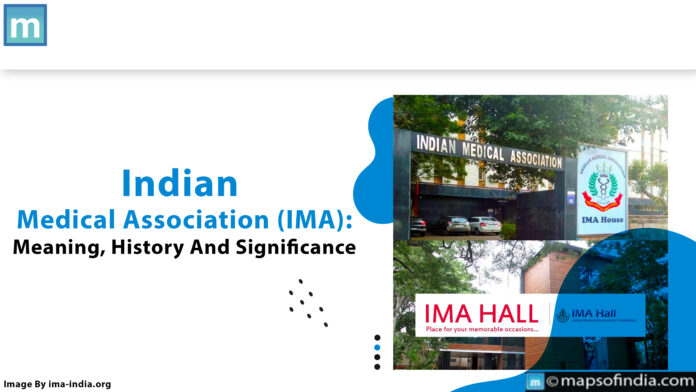The Indian Medical Association (IMA) is a key organisation in India’s healthcare sector. Founded in 1928, it acts as a national body for doctors nationwide. This article provides a balanced look at the IMA’s structure, history, and role in Indian healthcare.
The Indian Medical Association is a professional body representing doctors in India. It has over 350,000 members and operates through branches in all states and union territories. With more than 1,700 local branches, the IMA has a wide reach nationwide. The organisation aims to promote public health, support medical advances, maintain educational standards, and represent doctors’ interests.
Origins And Development
The IMA was established in 1928 in Calcutta (now Kolkata) by 222 doctors. They wanted to create a united platform for India’s medical community. In its early years, the IMA worked on improving medical education, addressing health issues, and contributing to healthcare policies. After India gained independence in 1947, the IMA continued to grow and adapt to the nation’s changing healthcare needs.
How The IMA Works
The IMA is structured with state and local branches, overseen by a central working committee. This committee includes representatives from all parts of India. The organisation holds regular meetings and conferences to discuss essential healthcare topics. It also shares information through various publications, helping doctors stay informed about new medical developments.
Key Areas Of Work
The IMA is involved in several essential healthcare activities. It supports national health programmes and helps coordinate medical aid during natural disasters. The organisation has also created guidelines for ethical medical practices. Additionally, the IMA organises educational programmes to help doctors keep their knowledge current.
Challenges In Indian Healthcare
The IMA operates in a healthcare system that faces several challenges. One major issue is the uneven distribution of doctors between cities and rural areas. Another concern is maintaining high standards in medical education. The rising cost of healthcare also affects both patients and healthcare providers.
The IMA’s Role In Indian Healthcare
The IMA plays an important part in India’s healthcare system. As a large professional body, it contributes to discussions about healthcare policies. The organisation provides opportunities for doctors to improve their skills and knowledge. It also helps with public health campaigns and awareness programmes, extending its influence beyond just the medical community.
Looking To The Future
The IMA continues to address various healthcare issues in India. It focuses on contributing to policy discussions, improving relationships between doctors and patients, and exploring how technology can be used in healthcare. As India’s healthcare needs change, the IMA aims to adapt its approach to remain relevant.
The Indian Medical Association has been an important part of India’s healthcare landscape for almost 100 years. Since its start in 1928, it has grown into a nationwide organisation representing many medical professionals. The IMA is involved in various aspects of healthcare, from supporting public health efforts to contributing to discussions on medical education and ethics.




